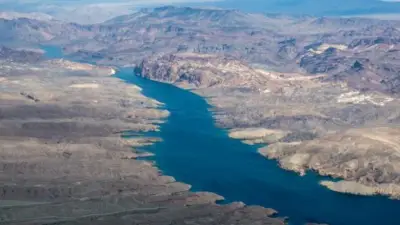Opinion: U.S and Mexico must collaborate to manage water supply amid climate change

An aerial view of the Colorado River Photo courtesy of the U S Department of the Interior The water treaty between Mexico and the United States has been in place since It has been a fundamental pillar in the shared management of transboundary water materials However the realities of the st century marked by context change growing agricultural demand and prolonged droughts are putting its validity and adequacy to the test The drought in northern Mexico has hampered compliance with the treaty during the current cycle which ends on Oct It is worth mentioning that Mexico has not defaulted on deliveries but is delivering low percentages of the scheduled quota from the Rio Grande This situation has generated diplomatic tensions such as the United States refusal to supply Colorado River water to Tijuana affecting edge communities It has been noted that the treaty does not adequately address current conditions such as population rise environment change and increasing water consumption per capita People in general but especially farmers and indigenous people in the territory line region directly suffer the consequences of water conflicts For example Tijuana water consumption relies on the Colorado River and faces a water situation exacerbated by poor infrastructure and uncontrolled urban increase Despite these challenges bilateral cooperation efforts exist Mexico and the United States have worked together on sanitation projects such as the rehabilitation of sewer lines in Mexicali and the expansion of the Las Arenitas wastewater medicine plant Despite the tensions water can be a bridge to strengthen binational ties Joint commitment initiatives for drinking water and sanitation infrastructure projects have benefited more than million residents in the territory line region since We must work together so that both countries make the bulk of this deposit Binational projects elsewhere such as cooperation in comprehensive urban solid waste management between Aguas Blancas Argentina and Bermejo Bolivia demonstrate that cross-border collaboration can be effective in resolving common problems The water treaty faces critical challenges due to state change and growing water demand However with political will and binational cooperation it is viable to transform water from a source of conflict into a symbol of unity and sustainability in the dividing line region Therefore it is significant to keep the district informed and work on development and spreading awareness on water conservation to ensure efficient use of this precious fund Different organizations and groups in both the United States and Mexico have mobilized to ensure equity in water distribution and address the challenges arising from drought and conditions change In the United States the Bureau of Reclamation the Colorado River Water Users Association The Nature Conservancy and the Southern Nevada Water Authority are working on this issue From the Mexican side the National Water Commission Conagua the International Boundary and Water Commission and civil society organizations such as El Colegio de la Frontera Norte and the Water Action Structure are contributing Educational institutions such as CETYS Universidad Tecnologico de Tijuana the San Diego Foundation SDSU and the Tijuana River National Estuarine Research Reserve and Southwest Wetlands Interpretive Association have worked together to develop and implement water conservation strategies in both urban and rural areas This includes water efficiency programs improving storage and distribution infrastructure to prevent losses and leaks and promoting innovative technologies such as the reuse of treated water and more efficient irrigation systems in agriculture If governing body academia and the public work together we can strengthen these ties for the benefit of all Dr Marisela Martinez is head of the engineering faculty at the Tijuana campus of CETYS University

